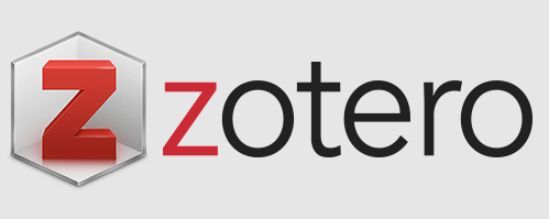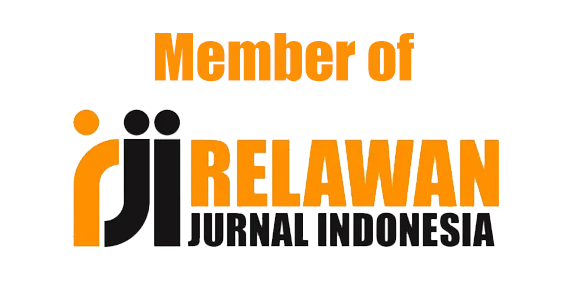Understanding of Animal Science Students on Livestock Fiqh : Case Study Students of Animal Science Department State Agricultural Polytechnic Pangkajene Kepulauan, South of Sulawesi, Indonesia
DOI:
https://doi.org/10.24256/alw.v9i1.4885Keywords:
Animal Science, Islamic law, fiqhAbstract
References
Abdul Rahman, S.; Aidaros, H. Islam and animal welfare with special reference to cruelty to animals during transport and slaughter. J. Commonw. Vet. Assoc. 2012, 28, 27–30.
Al-Masri, H.B.A. Animal experimentation: The Muslim viewpoint. In Animal Sacrifices: Religious Perspectives on the Use of Animals in Science; Regan, T., Ed.; Series: Ethics and Action; Regan, T., Series Ed. Temple University Press: Philadelphia, PA, USA, 1986; pp. 171–197.
Andriyanto, I. 2011. Strategi Pengelolaan Zakat dalam Pengentasan Kemiskinan. Walisongo. Volume 19. Nomor 1. 25-45
Arafat,A.T, (2022) Berzakat Itu Mudah (Fikih Zakat Praktis). Indonesia. Penerbit Lawwana.
Bryant, C. (2020). Culture, meat, and cultured meat, Journal of Animal Science, 98(8),1-7.
Celada, P., Bastida, S., & Muniz, S. F. J. (2016). To eat or not to eat meat. That is the question. Nutricion Hospitalaria, 33(1), 177-81.
Choudhury, D., Singh, S., Seah, J. S. H., Yeo, D. C. L., & Tan, L. P. (2016). Commercialization of plant-based meat alternatives. Trends in Plant Science, 25(11), 1055-1058.
Farhan, Lukman K.2023. Analisis Tingkat Pemahaman Masyarakat Kecamatan Margaasih Kabupaten Bandung Tentang Zakat. Ad-Deenar: Jurnal Ekonomi dan Bisnis Islam
Farouka, M.M.; Pufpaffb, K.M.; Amirc, M. Industrial halal meat production and animal welfare. Meat Sci. 2016, 120, 60–70.
Fuseini, A., Wotton, S. B., Knowles T. G., & Hadley, P. J. (2017). Halal meat fraud and safety issues in the UK: A review in the context of the European Union. Food Ethics, 1(2), 127-142.
Ghuron,A. 2011. Tuntutan Berkurban dan Menyembelih Hewan. Jakarta. Amzah
Godfray, H. C., Aveyard, P., Garnett, T., Hall, J. W., Key, T. J., Lorimer, J., Pierrehumbert, R. T., Scarborough, P. Springmann, M., & Jeb, S. A. (2018). Meat consumption, health, and the environment. Science, 361 (6399). doi.10.1126/science.aam5324
Gould, S., & Friedman, L.F. (2016). These are the countries where people eat the most meat. Retrieved from the Insider US Market Closed Website: https://www.businessinsider.com/where-do-people-eat-the-most-meat-2016-10
Gurning, H.R.H., Ritonga, H.D.H. 2014. Analisis Tingkat Kesadaran Masyarakat Kecamatan Medan Baru dalam Membayar Zakat. Jurnal Ekonomi dan Keuangan. Volume 3. Nomor 7. 490-504
Hadi, R.R, Purwanto, M.R (2023). Fikih Peternakan. Uwais Inspirasi Indonesia: Ponorogo
Ismail, I., Hwang, Y. H., & Joo, S. T. (2020). Meat analog as future food: A Review. Journal of Animal Science and Technology, 62, 111-120.
Knysh, A. (2017). Sufism: A new history of Islamic mysticism. Princeton & Oxford: Princeton University Press.
Larsson, S. C., & Wolk, A. (2006). Meat consumption and risk of colorectal cancer: A meta-analysis of prospective studies. International Journal of Cancer, 119(11), 2657–2664.
Mahato, S. (2019). Relationship of sanitation parameters with microbial diversity and load in raw meat from the outlets of the Metropolitan City Biratnagar, Nepal. Hindawi International Journal of Microbiology. National Library of Medicine. 62(2):111-120.
Monty, A., Francis, F., Haubruge, E., and Danthine, S. (2016). Grasshoppers as a food source? A review. Biotechnology, Agronomy and Society and Environment 20(S1), 337-352.
Nabil Ahmad, & Haroon ur Rasheed. (2017). Stunning of Livestock before Slaughter and Modern Fiqh Research. Journal of Islamic and Religious Studies, 2(2), 49–64.
Paulsen, P., Nauman, K., Bauer, F., Avagnina, A., & Smulders, F. J. M. (2017). Game meat fermented products food sfety aspects. In N. Zdolec (Eds.), Food Biology Series Fermented Meat Products: Health Aspects (pp.58-77). Boca Raton: CRC Press Taylor&Francis.
Petriani, P., Hafid, H., Mirwanhono, R. E., and Wahyuni, T. H. (2020). Teknologi pengolahan daging. Medan: CV Anugerah Pangeran Jaya Press. Pew Research Center. (2015). The future of world religions: Population growth projections, 2010-2050.
Post, M. J. (2014). Cultured beef: medical technology to produce food. Journal of the Science of Food and Agriculture, 94(6), 1039–1041.
Reese, J. (2018). The end of animal farming: How scientists, entrepreneurs, and activists are building an animal-free food system. Boston: Beacon Press.
Rosyidi, Djalal. 2017. Rumah Potong Hewan dan Teknik Pemotongan Ternak secara Islami. Malang. Universitas Brawijaya Press.
Saleh, F. (2016). Fikih Pendidikan Anak: Membentuk Kesalehan Anak Sejak Dini. Indonesia: Qisthi Press.
Salsabilah, Eva Nurhafiah and Huda Maheswara, Moh. Yuflih (2021) "Pandangan Hukum Positif Dan Hukum Pidana Islam Mengenai Penganiayaan Hewan: Studi Kasus Penganiayaan Anjing Di Kabupaten Aceh Singkil Pembukaan Wisata Halal," Journal of Islamic Law Studies: Vol. 4: No. 2,16-29.
Prasetyani, D., Ardianto, D. T., & Firdaus, A. (2021). Integration of livestock supply chain strategy as part of the creative economy and creative industry in indonesia: literature review. IOP Conference Series: Earth and Environmental Science, 902(1), 012051. https://doi.org/10.1088/1755-1315/902/1/012051
Sans, P., & Combris, P. (2015). World meat consumption patterns: An overview of the last fifty years (1961–2011). Meat Science, 109, 106-111.
Sugiyono. 2017. Memahami Penelitian Kualitatif. Edisi 8. Bandung. Alfabeta
Tho’in, M, dkk. 2022. Sosialisasi Penyembelihan Dan Pembagian Hewan Qurban Sesuai Syariat Islam. Budimas (Jurnal Pengabdian Masyarakat) Volume 4. Nomor 2 Volume 7. No 1. 115-128
Wahab, N. A., Shahwahid, F. M., Hamid, N. A. A., Othman, N., Ager, S. N. S., Abdullah, M., Miskam, S., & Saidpudin, W. (2016). Contributions of Malaysia and Singapore in the development of Halal industry in the ASEAN region. Asian Journal of Social Sciences & Humanities, 5(2), 37-46.
Y. Martins, P. Pliner. 2005. Human food choices: An examination of the factors underlying acceptance/rejection of novel and familiar animal and nonanimal foods. Appetite. Elseiver, Volume 45, Issue 3, December 2005, Pages 214-224
Kızılkaya, N. (2021). They are communities like you the rationale for animal rights and welfare in islamic civilization. JHS, 11(2), 1-18. https://doi.org/10.12658/m0610
Safitri, L., Syamsi, A. N., Purwaningsih, H., Muatip, K., Fadloli, A., Ariyani, D., … & Rahman, I. K. (2022). Animal welfare from islamic perspective. KnE Life Sciences. https://doi.org/10.18502/kls.v0i0.11841
Malek, M. M., Saifuddeen, S. M., Rahman, N. N. A., Yusof, A. N. M., & Majid, W. R. A. (2021). Honouring wishes of patients: an islamic view on the implementation of the advance medical directive in malaysia. Malaysian Journal of Medical Sciences, 28(2), 28-38. https://doi.org/10.21315/mjms2021.28.2.3
Rohidin. (2016) Buku Ajar Pengantar Hukum Islam: Dari Semenanjung Arabia hingga Indonesia. (n.d.). (n.p.): Lintang Rasi Aksara Books.
Sabiq Sayyid (2018) Fikih Sunnah jilid 5 diterjemahkan oleh Abu Aulia dan Abu Syauqina. Repulika Penerbit. Jakarta

























